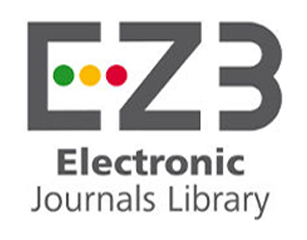MODELING THE SYSTEMS OF ENSURING THE STATE SECURITY
DOI:
https://doi.org/10.32689/2617-2224-2019-5(20)-229-240Keywords:
modeling, security, state, threats, risksAbstract
The model of ensuring the system of the state security is proposed as an effective tool for realizing the interests of the citizens and society, taking into account internal and external factors of influence. Possibilities of application of the mathematical methods for the optimal choice of the means of protection against threats and dangers in the public administration are investigated.
Ways of using the artificial intelligence to establish the state security criteria have been studied. In particular, the optimization-simulation methods are considered, which allow, due to a certain number of iterations, to obtain an approximate value of the studied parameters. Their practical importance has been determined for the purpose of further application in the fields of: analysis of the national security threats; analysis of the market for protection against such threats; processing of the information on the characteristics of the threats (opportunities for manifestation and harm); processing of the information on possibilities of prevention of the threats; development of the algorithms for the optimal choice of the protection options.
The theoretical aspects of the use of artificial neural networks that can be used in the process of the state security modeling are investigated. The peculiarity of their use can be considered that a large number of input indicators characterizing the level of the national security can be analyzed by machine method, using machine learning algorithms. This makes it possible to classify different states, such as threats, risks and dangers. And while the problem of the influence of the input parameters of the neural network remains unsettled, their self-study, combined with simulation methods of the mathematical modeling, can further resolve the optimization of the state security assessment.
References
Common Assessment Framework — CAF [Електронний ресурс] // European CAF Resource Centre. 2019. Режим доступу до ресурсу: https://www.eipa.eu/portfolio/european-cafresource-centre/
Про затвердження Методики розрахунку рівня безпеки України / Наказ Міністерства Економіки України / документ v0060665-07, втратив чинність, поточна редакція — Втрата чинності від 29.10.2013, підстава — v1277731- 13 / [Електронний ресурс]. 2019. Режим доступу до ресурсу: https://zakon.rada.gov.ua/rada/show/v0060665-07
Романенко Є. О. Державне управ- ління процесами забезпечення внутрішньої екологічної безпеки в Україні: організаційно-правовий аспект // Аспекти публічного управ- ління. Журн. Дніпропетровського регіонального ін-ту держ. управління НАДУ при Президентові України. 2016. № 1–2 (27–28) січень-лютий. С. 67–73.
Райт Г. Государственное управле- ние: учеб. пособие / Г. Райт. Бишкек: КГНУ, 1997. 284 с.
Вечканов Г. С., Вечканова Г. Р. Ми- кроэкономика. Завтра экзамен. 6-е изд. СПб.: Питер, 2004. 288 с.
Тюрин С. Ф., Городилов А. Ю., Дани- лова Е. Ю. Диагностирование логи- ческого элемента DC LUT FPGA // Инженерный вестн. Дона, 2014. № 2. URL: ivdon.ru/magazine/archive/n2y2014/2313
Lukasiewicz J. Logika trojwartosciowa. Львов: Ruch Filozoficzny. r. V., 1920. Т. 5. № 9. Р. 169–171.
E.L. Post Introduction to a General Theory of Elementary Propositions // Amer. Journ. of Math. 1921. № 3. Р. 163–185.











